In verified data we trust: investment positions, holdings, and trades reconciliation
Capital markets were among the first to benefit from globalization and trade liberalization. The investment turnover at global scale is mind blowing. Everyone is pursuing greater returns and opportunity to preserve and increase value. However, after the 2008 financial crisis, legislators saw fit to enhance transparency and accountability. Today, investment firms are subject to heavy regulation on national and international level.
To minimize the risk of speculation, fraud, and the creation of a level playing field, regulators forced investment firms to comply with stricter reporting requirements. Stakeholders and watchdogs had to be reassured that transactional data flows and reported financial results were accurate and verifiable.
The investment ecosystem is immensely complex. Day-to-day accounting processes driven in spreadsheets for analytical, reporting, and operational purposes hardly qualifies as best practice. However, some anecdotal spreadsheet blunders costing millions have convinced the sceptics that each aspect of the trading lifecycle requires speed, precision, and a set of robust tools to tackle the complexity. Advanced technology aids the reasonable efforts to stay on top of data flows.
What is investments reconciliations: high level business logic
Reconciling positions, holdings, and trades as a key middle and back-office function of investment management firms takes a robust automation solution. ReconArt can successfully address the typical challenges, while also providing flexible functionalities that cater for the specific requirements of each asset class, investment institution or jurisdiction.
The high-level business logic of investments reconciliation boils down to matching of comparable positions. It is a process of checking and verification that the financial instruments (or rather their cash equivalent) held in a client account corresponds both to the statements provided by the counterparts and the contract obligations of the firm. It is up to the reconciliation team to arrange the tree of accounts by type, client, fund, or portfolio.
From a reconciliation process standpoint, the comparison of account balances at a certain point of time, the underlying transactions, and the associated cash transfers should not reveal any discrepancies. Or, if it does (which is often the case), those inconsistencies must be documented, investigated, and corrected in line with strict procedures and time frames. Therefore, best practice, as well as regulatory and compliance policies, mandates daily and/or intraday reconciliations.
The importance of reconciliations for compliance and audit readiness
The public trade of investment products, regardless of their nature (FX, commodities, stocks, bonds, etc.) is conducted in a global, fast-paced, fiercely competitive and heavily regulated environment. Fund administrators, custodians and asset managers must be equipped to keep up the performance metrics while minding the operational gaps. Compliance concerns top the list in that respect. The responsibilities related to fund segregation, data capture, record keeping, and proper documentation call for a unified reconciliation platform that can handle the complexities and install reliable check points.
ReconArt is closely involved in audit preparedness. It becomes a central repository for all post-trade reconciliation data with a granular audit trail captured. Every change is reflected in the system and time-stamped: original data sources, matching logic applied, adjustment documentation, breaks classification, escalation paths, approval workflows, strict separation of roles and access rights.
Transaction matching and account reconciliation
Naturally, the greatest advantage for users reconciling records with ReconArt, is the unparalleled matching capabilities. ReconArt processes huge volumes of data from two perspectives: transaction and account balance level. Sophisticated ETL functionalities import and transform data from multiple sources automatically. Typically, investments reconciliations deal with extracts from the internal ledger and third-party statements, where opening balance, account movements, and closing balance are listed. ReconArt supports the most common file formats (MT SWIFT messages, XLS, XML and industry specific formats) out of the box.
The data sets comparison is rule-driven and performed by multiple user-defined parameters (e.g. amount, date, unique ID). Complex matching relationships (one-to-one, one-to-many, and many-to-many) are easily identified. The matching logic is fully auditable, and the combination of several match criteria reinforces the matching results. The platform slashes the processing downtime to seconds while maintaining top performance. Daily reconciliation can be triggered by scheduled operations within the system.
Identifying discrepancies in investment positions, holdings, and trades reconciliation
Comprehensive discrepancies categorization is crucial for the reconciliation software in the investments industry. Generally, breaks are identified differences between the holdings confirmed in the internal records of the firm and third-party settlement instructions. It is essential to correctly identify the source of the break, because that determines how it is treated until final resolution.
Unlike outstanding items in other reconciliation processes, resolving breaks follows specific procedures, chains of responsibility, deadlines, and documentation guidelines depending on its type. Failing to address the breaks in the prescribed manner incur penalties such as interest claims, fines, reputation damages, and even threaten a company’s license to operate.
Breaks can emerge due to failure to sync the systems communication across the trade chain, incorrect file conversion and/or mapping, timing delays, conflicts created by manual adjusting entries or auto postings. Meanwhile, another group of breaks can indicate accounting policy differences, booking errors, missing or duplicate records. Breaks often originate from discrepancies in prices applied, miscalculation of fees, wrong account allocations, insufficient funds, and so on.
Control and visibility on investment account reconciliations: automated resolution of breaks
Different types of accounts should maintain certain balances (for example suspense accounts to zero). In an automated environment the variances can be highlighted instantly for analysis and duly addressed. Also, it is essential to track the aging of breaks. Keeping an eye on those pending unsettled transactions take rigorous, systematic monitoring. The reconciliation software can flag irregular account activity and notify if aging thresholds are about to be crossed.
ReconArt can automatically apply user defined rules for breaks classification and speed up the resolution. On top of that, the Cases module can be helpful when responsible officers from different departments must collaborate to investigate and correct groups of exceptions.
Besides a more streamlined exceptions management, the reporting features provide at-a-glance overview of account status in customizable dashboards. Preconfigured reports can be generated on schedule and specified account data output can feed other systems. ReconArt takes care of the total reconciliation lifecycle management and integrates seamlessly into the current business infrastructure.
ReconArt addresses all those needs of fund administration for a configurable and versatile reconciliation platform to mitigate risks, prevent regulatory breaches, and safeguard against liquidity shortfalls.
A special ReconArt feature first published on Bobsguide – the ultimate fintech resource, an innovative online platform that connects the providers of fintech solutions with the financial services professionals who need them.
Read the article here as well.

 follow our blog
follow our blog
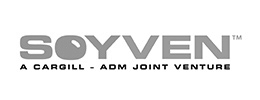

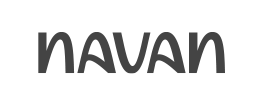
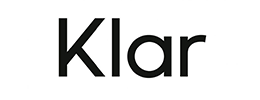



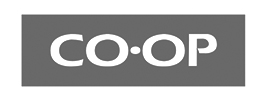

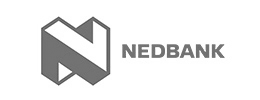


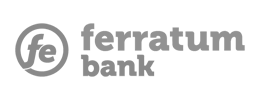









 Quick response
Quick response

